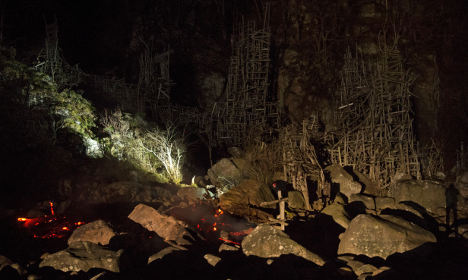Man Ray, “Boardwalk” (1917) and “Object To Be Destroyed” (1923) / students
In his 1963 autobiography, Man Ray writes that in 1957, these two works were attacked while on view in a retrospective exhibition of early Dada works shown in a Paris Gallery. According to the artist, while he was in the gallery speaking with fellow artist Tristan Tzara, a group of students from the nearby Ecole des Beaux-Arts rushed in, throwing into the air pamphlets denigrating Dada and Surrealism in the name of French tradition, and stole these two works before running away. As he chased after them, Man Ray saw one of the students pull out a gun and shoot a series of bullet holes into “Boardwalk,” leaving the damaged work in the street. “Object To Be Destroyed” was never recovered.
Upon receiving insurance reimbursements for the works in 1958, Man Ray promptly created a replica of “Object To Be Destroyed,” with the new title “Indestructible Object.” As for “Boardwalk,” while the insurer offered to have the piece restored, Man Ray refused, insisting that, as a Dada object, it had become even more precious after having been stolen and shot.
Upon later reflection, Man Ray expressed his satisfaction with the entire affair - particularly the insurance payout, which he saw as having “succeeded in making what was not considered a work of art as valid as any legitimate painting or sculpture.”




































